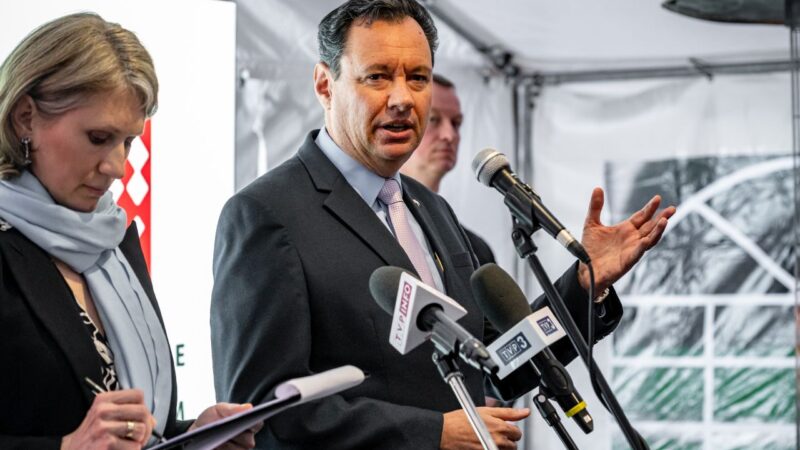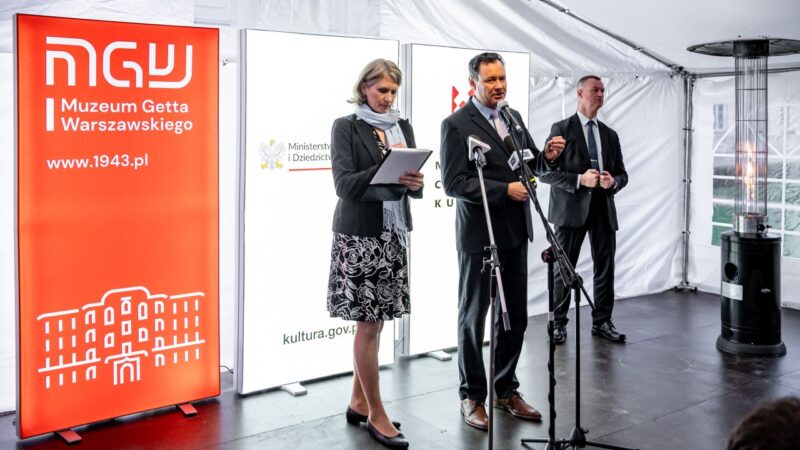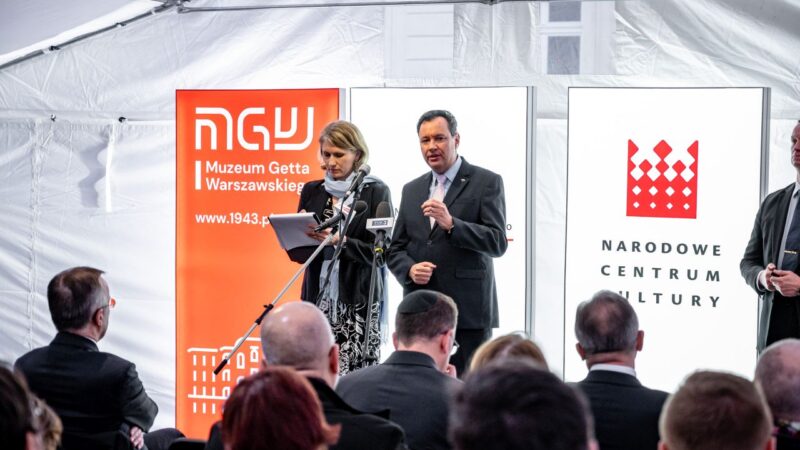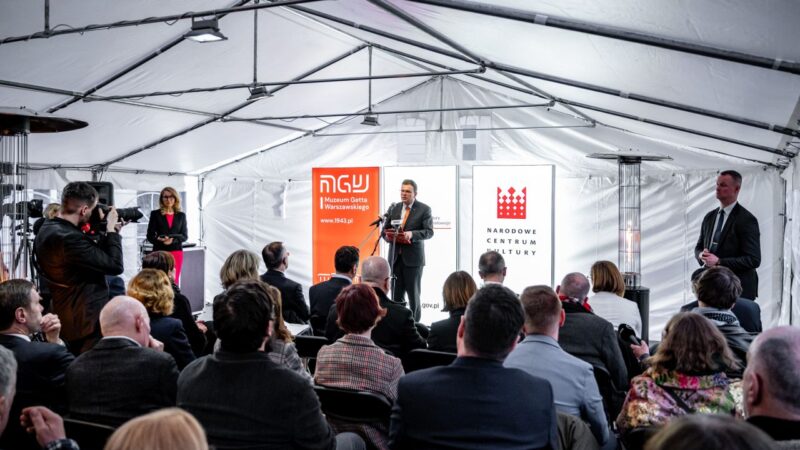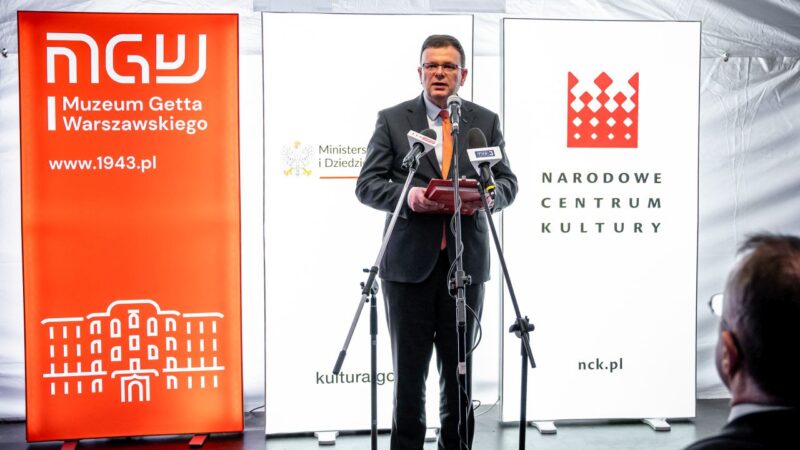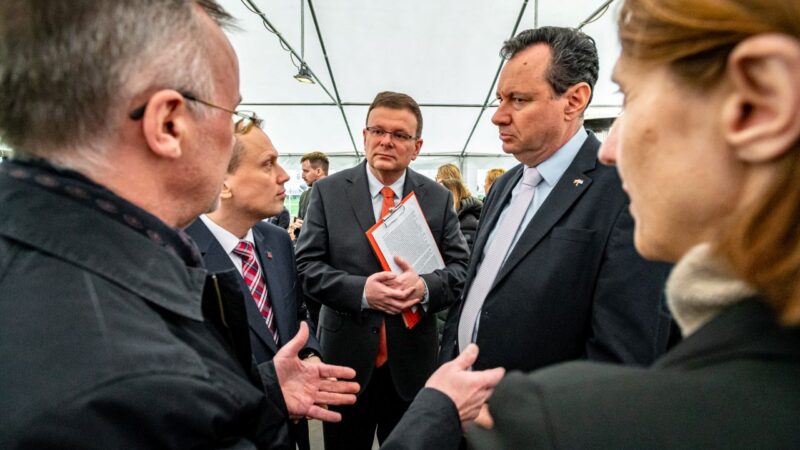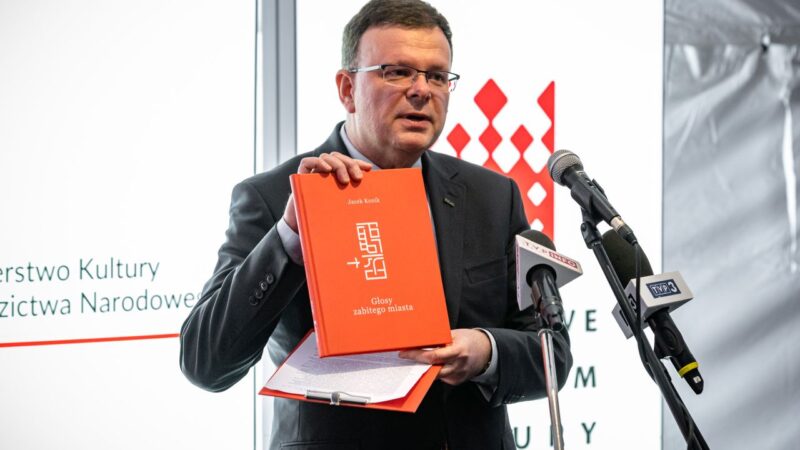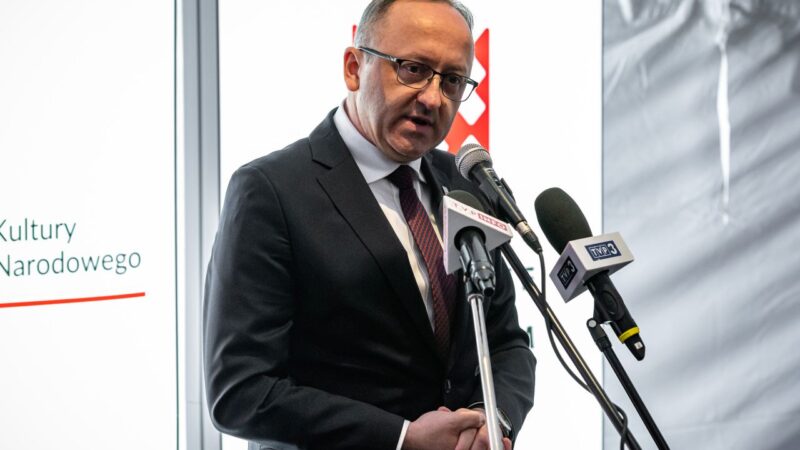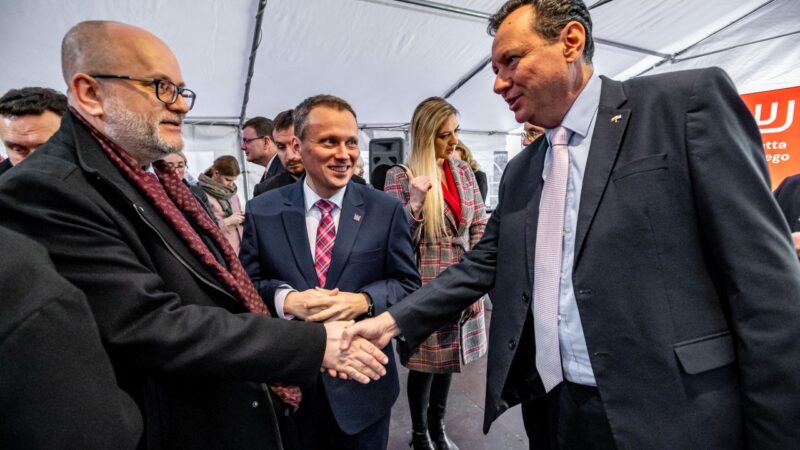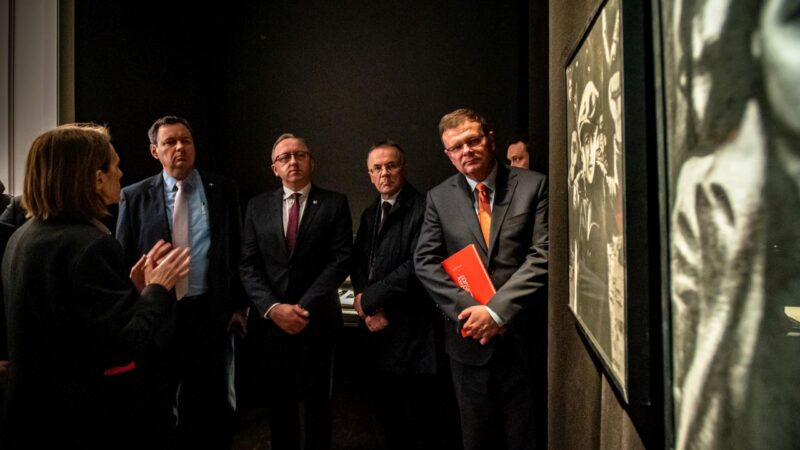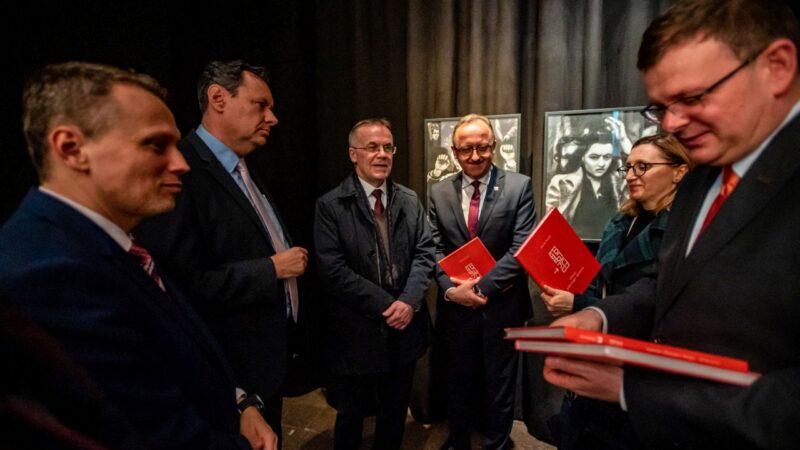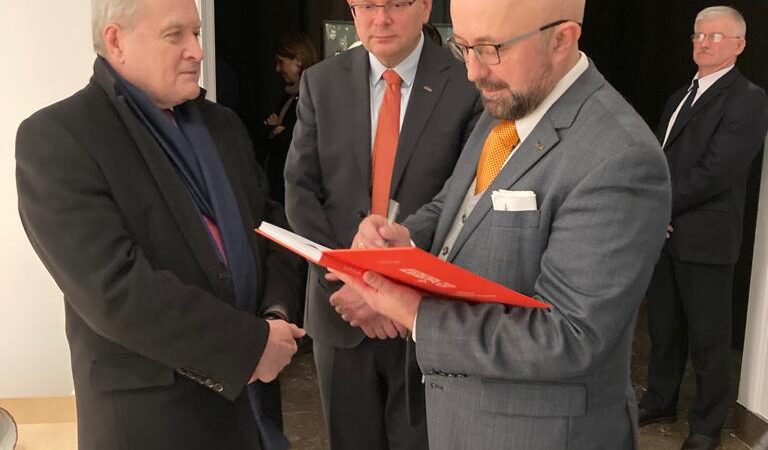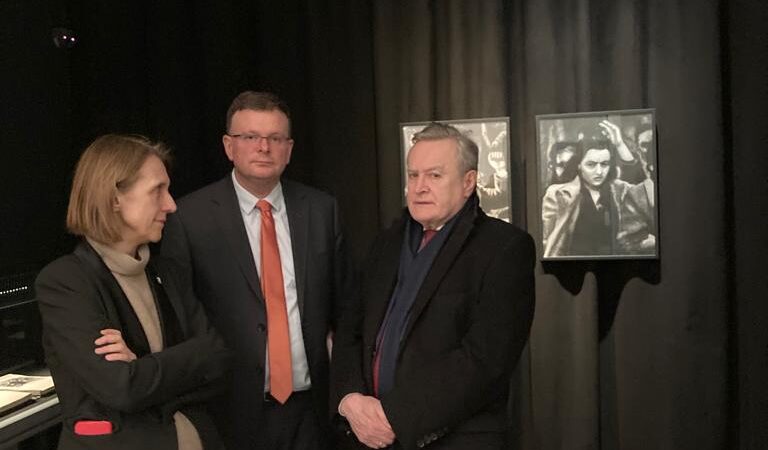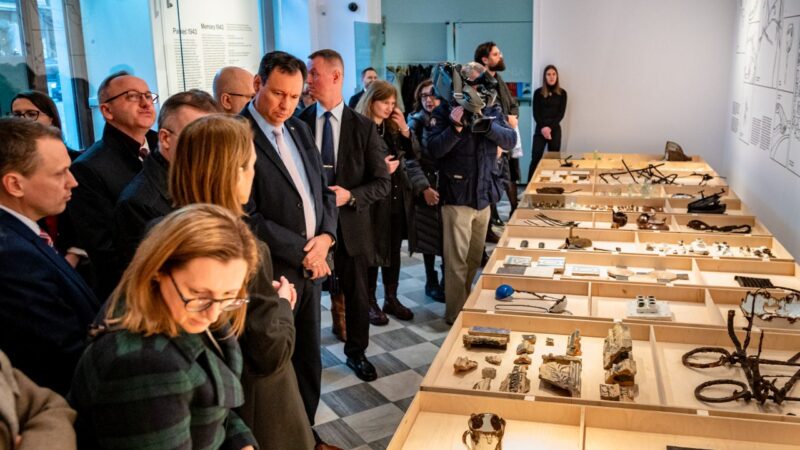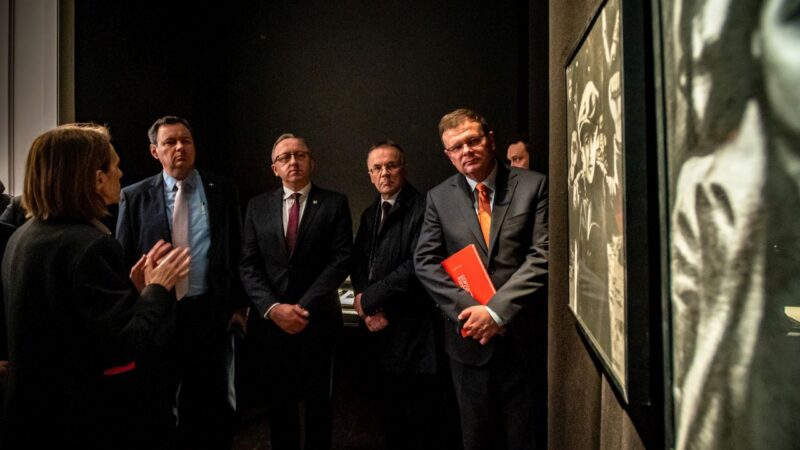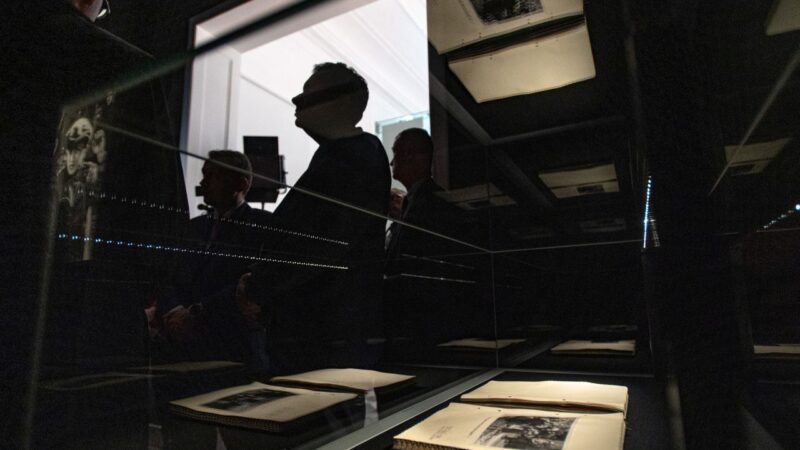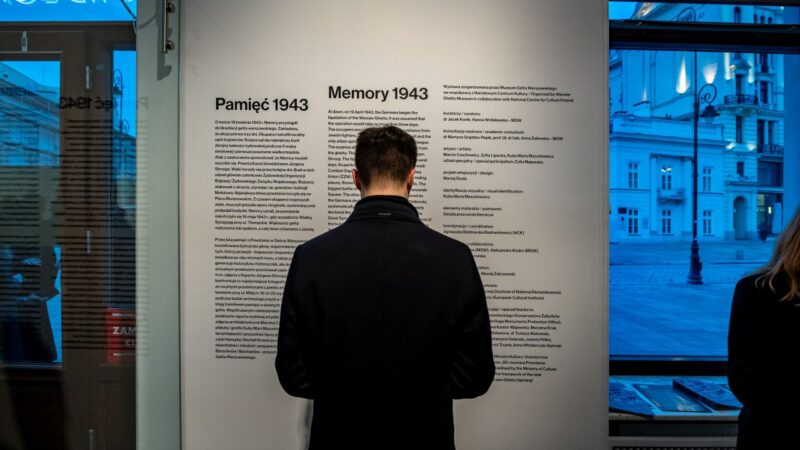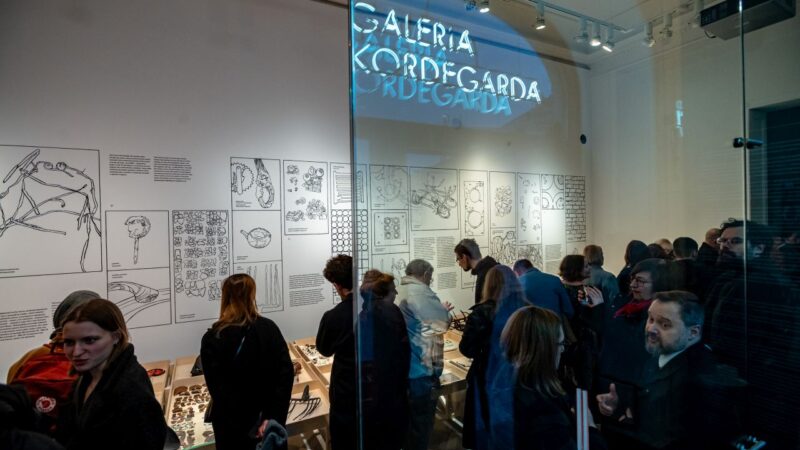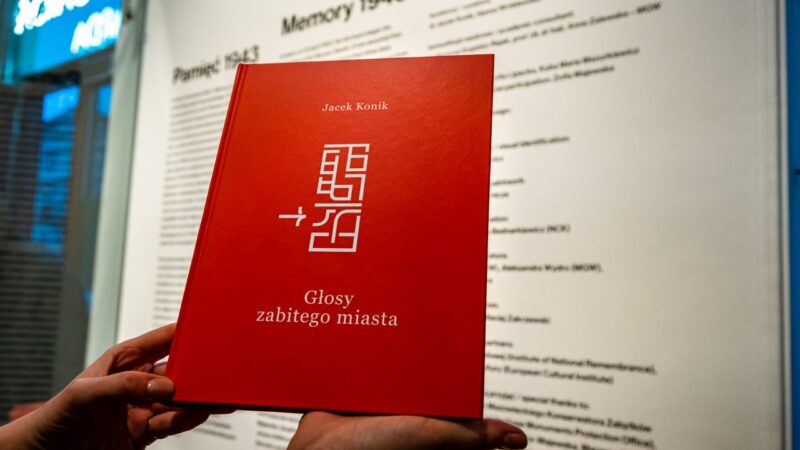Photo Coverage | „Memory 1943” – Exhibition Opening
The vernissage of the „Memory 1943” exhibition organized by Warsaw Ghetto Museum and the National Centre for Culture Poland in Kordegarda Gallery took place on March 30, 2023. The exhibition is a part of commemorating the 80th anniversary of the Warsaw Ghetto Uprising.
The exhibition presents a priceless document: The Stroop Report, which will be one of the most important objects of the Warsaw Ghetto Museum’s permanent exhibitions. The other exhibits include artifacts found during excavations at the former Warsaw Ghetto site. Contemporary references to the testimony of history include drawings, photographs and posters.
„The Warsaw Ghetto Uprising, as well as the Warsaw Uprising a year later, was a desperate and heroic struggle of the citizens of the occupied city who fought for their dignity, humanity and freedom. We recall this painful history not only to pay tribute to those Innocent people who were murdered, but also as a warning against the consequences of national hatred and against the cruelty of war,” the vice-minister of the Polish Ministry of Culture and National Heritage Jarosław Sellin said during the exhibition opening.
„We need to stop antisemitism, we need to stop xenophobia wherever we see them. If there are lessons from the Holocaust and the Second World War, this is certainly one of them. This is why it is so important to commemorate what happened here, on Polish soil, 80 years ago,” Israeli ambassador to Poland Yacov Livne said. Mr Livne also expressed his gratitude to those who ““who work on this on a daily basis… and make sure that the world would not forget”.
The Warsaw Ghetto Museum Albert Stankowski shared the details about the exhibition:
“Confronted with Nazi barbarism, both the ghetto and its victims ceased to exist. (…) What remained, however, was the memory preserved in the testimony of Holocaust witnesses and in German sources. The most important of the latter, Jürgen Stroop’s Report, which, with the help of the Institute of National Remembrance, will become the Museum’s key exhibit in the near future, is presented at the exhibition in confrontation with everyday objects from the basements of destroyed tenements on Miła Street excavated during the Museum’s archaeological research in 2022. These objects, rather than a written report that bears witness to German barbarism, become a symbol of the former residents’ memory. While looking at them at the exhibition, let’s remember that they were owned and sometimes loved by the late Jewish residents of Warsaw.”
„The exhibits are complemented by contemprorary drawings of an outstanding Polish artist Zofia Lpiceka, architectural photographs by Marcin Czechowicz, as well as posters and graphics by Kuba Mazurkiewicz. The past, the present and the future are brought together by the voice of Zofia Majewska, the daughter of Henryk and Rachcela Kroszczor whose childhood and youth were connected with Bersohn and Bauman Hospital, the WGM’s future seat,” he added.
Director of the National Centre for Culture Rafał Wiśniewski and vice-president of the Institute of National Remembrance Karol Polejowski also delivered speeches. Polish Minister of Culture and National Heritge Piotr Gliński was also present at the exhibition opening.
The vernissage of the “Memory 1943” exhibition is one of the first events commemorating the 80th anniversary of the Warsaw Ghetto Uprising. You can find the detailed information about other events here: https://warsaw1943.pl/en. The commemoration ceremony is financed by the Polish Ministry of Culture and National Heritage within the framework of the task “80th Anniversary of the Warsaw Ghetto Uprising”.



